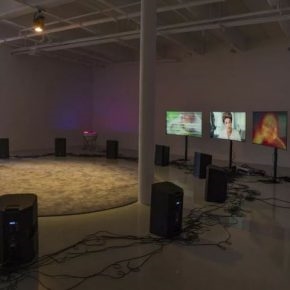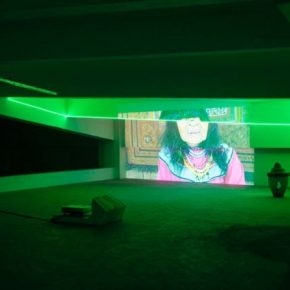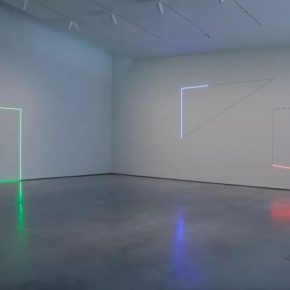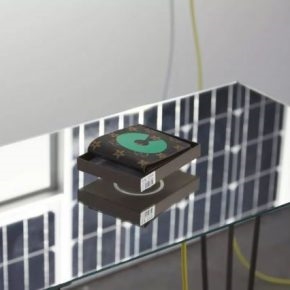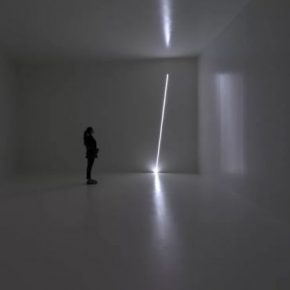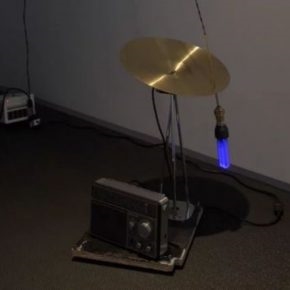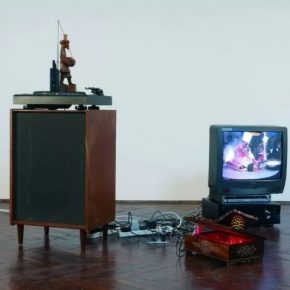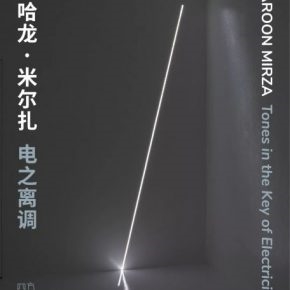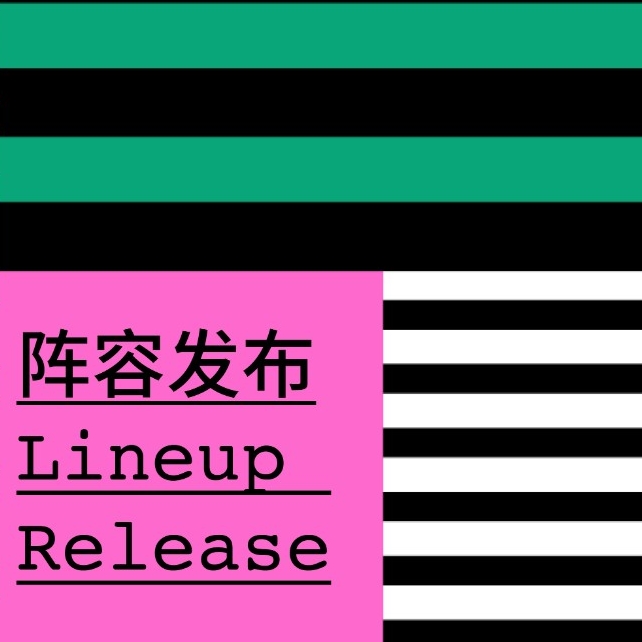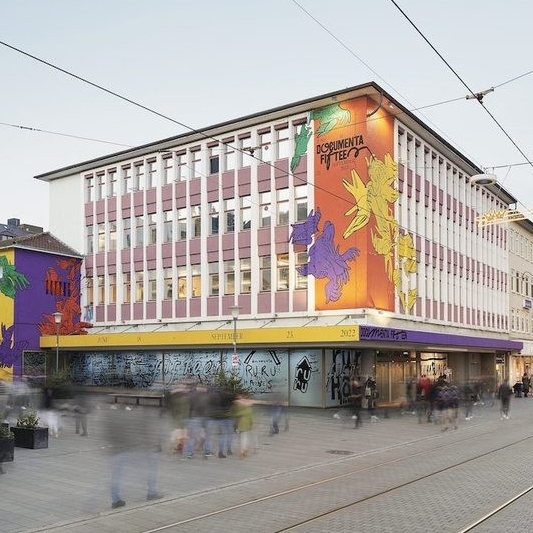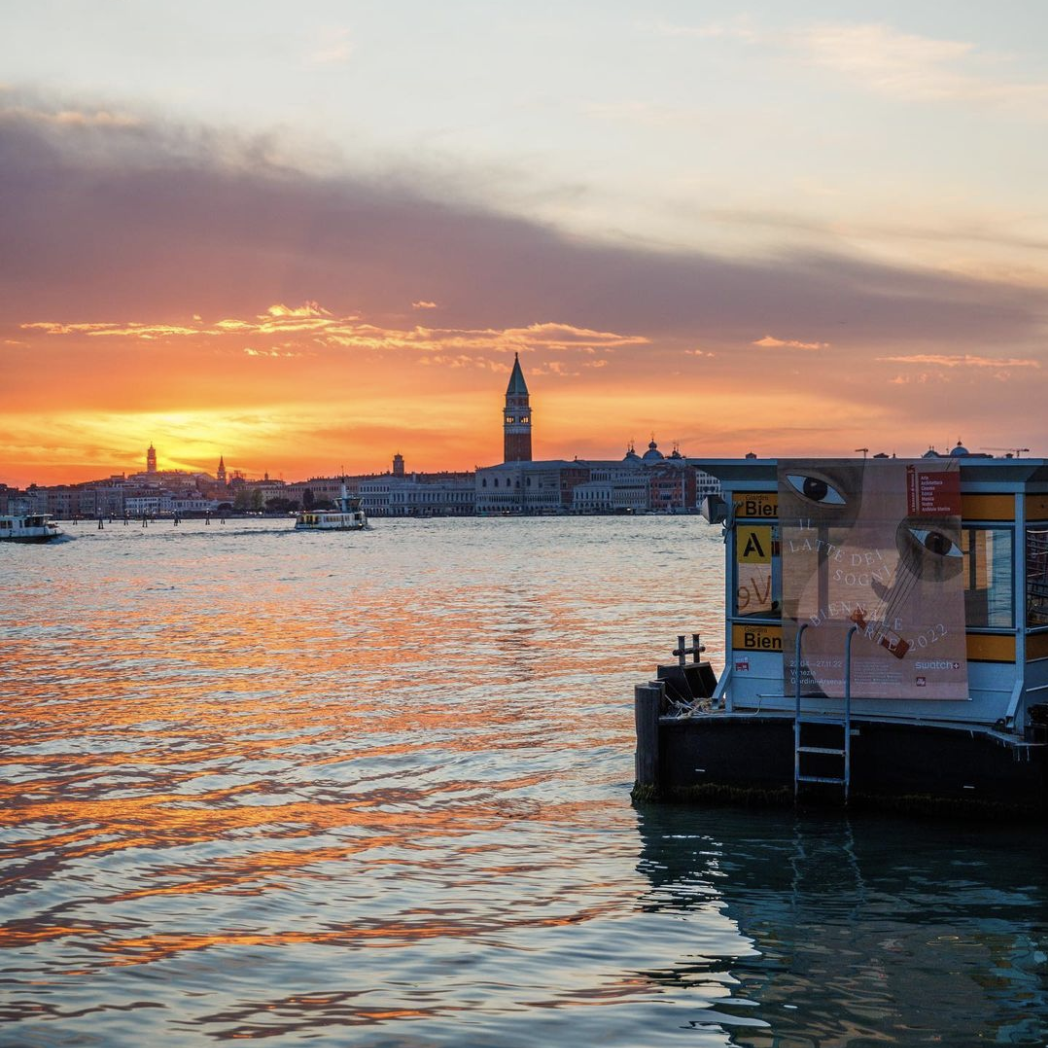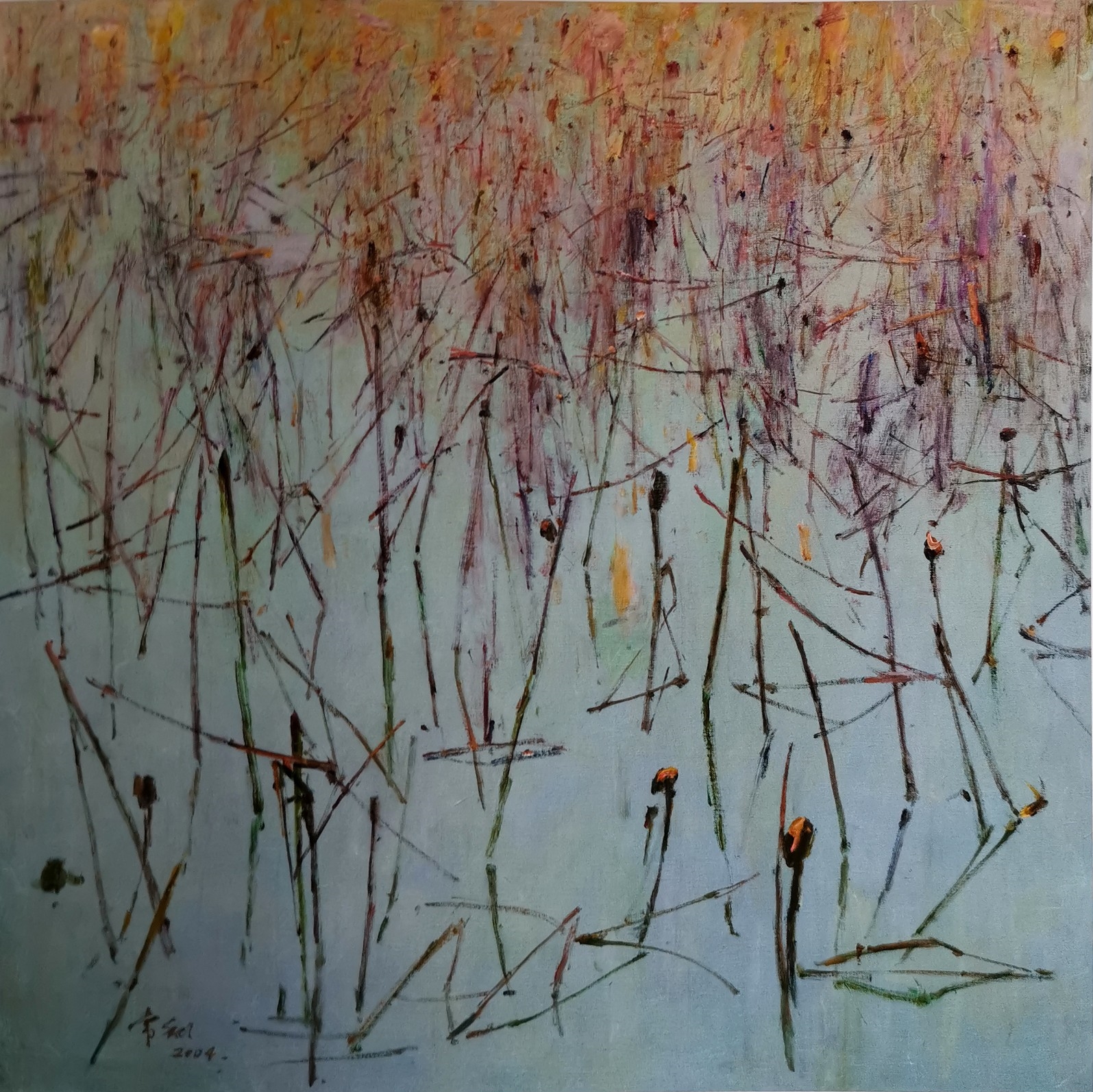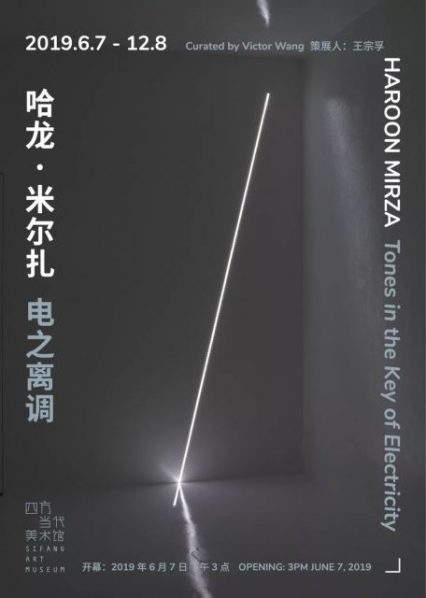
The Sifang Art Museum announces the first solo museum exhibition in China by UK-based artist Haroon Mirza. The exhibition ‘Tones in the Key of Electricity’ is structured as a type of ‘composition’, or 构成 (gòuchéng), with two aspects. The first of these focuses on helping to disentangle the recent ocularcentric shift in Western societies and the privileged position that the visual holds in both cultural analysis and contemporary art. The second employs the framework of 复制品 (fuzhipin), a term in Chinese that describes an exact copy of the original that retains a value equal to that of the original, with no negative connotations, to offer an alternative schema for concepts of the replica and the copy that depart from Euro-American definitions of these terms. Occupying the entirety of the museum, the exhibition will run for a significant six-month duration.
By thinking through ways of hearing as a method of widening the cultural scope and offering another mode of perception for the audience, the exhibition utilizes a structure of 声 (shēng) and tonality, common aspects of languages in East and Southeast Asia, the Pacific and Africa, in which a shift in tone does more than simply expressing emotion, as it does in the English language, instead conveying a completely alternative meaning, or even multiple meanings.
Further, two major installations are ‘copied’, or ‘fuzhipin’ from Mirza’s practice to make up the particular melodic pattern and the specific 第一声 (dì yī shēng) (first tone), or 第二声 (dì èr shēng) (second tone) of the exhibition, each one building on the other in layers as part of the show’s ‘sound shape’, engaging with both the immaterial light and the sonic domains of the artworks and the architecture of the Steven Holl-designed museum. Shown alongside other earlier works, such as Siren (2012), Too Many Lingzhi (2015), a collaboration with Gaia Fugazza, and a new iteration of Rules of Appropriation (2019), these two works of Copy of 9/11-11/9 (2019) and Copy of Pavilion for Optimisation (2019) were rebuilt with reference to the originals according to specific instructions by the artist, with materials and equipment sourced locally in China.
The framework of tonality, and the experience of both the artworks and the building, become audible in works such as Copy of 9/11-11/9 (2019), that comprises four videos and eight channels of electrical signals that have been physically expanded and placed across the different spaces of the museum. This allows both the audio and the visual elements of the installation to be experienced across the various lower galleries in the museum.
Electrical signals are transmitted through several strips of coloured LED lights, arranged with specific relation to the building. These electrical signals are also converted into sounds that make up parts of the audio composition of the works. The installation integrates video footage and subject matter that addresses the current global political climate. The video discusses the seismic events that have occurred internationally over the course of the past fifteen years, from the terrorist attacks in New York on September 11th, 2001 to November 9th, 2016, the day the votes for the US presidential elections came in – grounded again by the Icaro healing songs of the Indigenous peoples of South America.
Included in the exhibition is a new iteration of Mirza’s Rules of Appropriation series, entitled Rules of Appropriation (2019), which examines notions of collaboration and speaks to the failure of non-collaborative practice. Important to Mirza’s practice is a critique of the ‘material’ expansion of cultural capitalism, which places an emphasis on individualist desire, hierarchy, and forms of ‘forced cooperation’. The work comments on the problematic appropriation of contemporary artists’ work by fashion and other industries, and considers the lack of protection for artists when it comes to their artistic identity. The series was developed after the French fashion house Louis Vuitton – the world’s most valuable luxury brand, valued at $28.1 billion – appropriated Mirza’s artworks without consent for its 2018 window displays, including those at international flagship stores in London, New York and Shanghai. By incorporating designer bags that were obviously Louis Vuitton imitations, amongst other objects, into Rules of Appropriation, the work highlights the fashion industry’s double standards in relation to its own use of appropriation in contrast to its strict regulations against ‘knock offs’, or imitations.
Shown in the context of China, where concepts such as 仿制品 (fangzhipin) and 复制品 (fuzhipin) offer alternative approaches to notions of the copy and the replica from those in the West, the work highlights the realities of outsourcing production to China, the origin of almost 65 per cent of all counterfeits seized globally, according to the UN; the relationship between culture, global supply chains and other forms of appropriation, and the growing need for governments and multinationals to reconsider ideas of copyright and to employ a greater understanding of open-source initiatives as a fundamental condition of lateral globalisation.
Referencing the architecture of the Sifang Art Museum, Mirza has created a new series of site-specific ‘light works’. These works, which Mirza considers as ‘wall drawings’, explore his interest in compositions using electricity and light. Referencing a type of ‘anti-form’, these silent works use geometric lines of coloured LED strips and cables to highlight their spatial environment and the surrounding architecture.
Another key work in the composition of the exhibition is Mirza’s new version of Pavilion for Optimisation, entitled Copy of Pavilion for Optimisation (2019), a purpose-built sound chamber designed to create the maximum amount of reverberation possible. Viewers are invited to enter the chamber and experience the continuous prolongation of a sound. The chamber, in which no two walls are symmetrical or parallel, was constructed with architect Omar Mirza. Within the chamber a single strip of white LED lights up the chamber for a brief interval; a white speaker hangs in a corner and fills the room with sound from a live feed of water from an external shower.
The exhibition will also feature a special new work by Mirza that responds to the recent exchange the artist has had with both fashion house Louis Vuitton, and more recently with Off-White Founder and LV Men’s Artistic Director Virgil Abloh. The artist has also made a series of special ‘un-collaborative collaborations’ editions available at the museum for purchase, a limited edition 复制品 (fuzhipin) collaboration between Haroon Mirza and Louis Vuitton.
About the exhibition
Dates: Jun 7, 2019 - Dec 8, 2019
Opening: Jun 7, 2019, 15:00
Venue: Sifang Art Museum
Courtesy of the artist and Sifang Art Museum.


